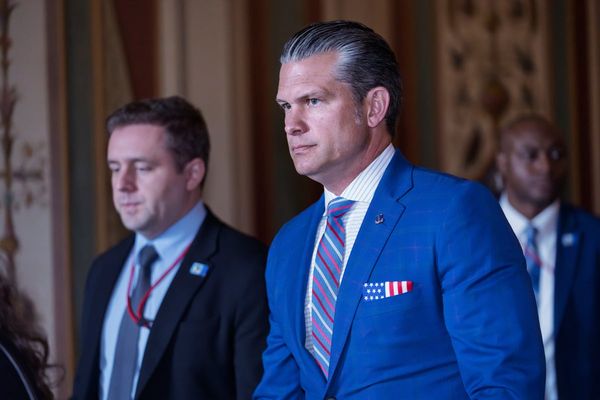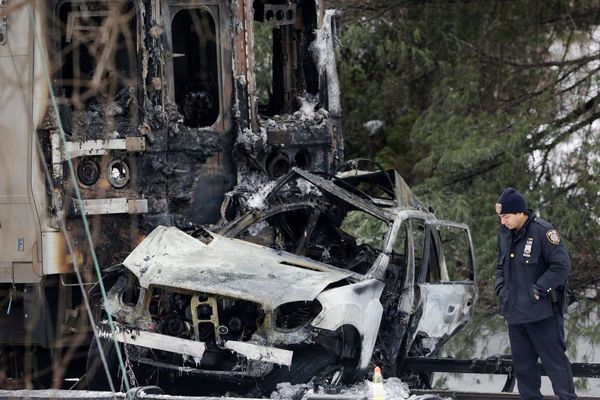
When, in early March 2022, Lt Col Valery Sergeyevich Buslov, a 46-year-old Russian military commander, arrived in the Ukrainian city of Balakliia, he promptly ordered his troops to set up checkpoints, hide artillery in the nearby woods, and convert the local police station into a detention camp.
For seven months, until the city was liberated by Ukrainian armed forces, more than 200 civilians, including 30 women, were detained and subjected to degrading treatment. At least 150 men were tortured, one woman allegedly raped, and seven civilians were killed.
The Guardian has spoken to some of the victims, visited the cells where civilians were tortured, and reviewed the investigation by Kharkiv prosecutors, including a four-page document they obtained, which had been signed by Buslov and his deputy, ordering the illegal detention of civilians. The investigation has led to the identification of dozens of Russian soldiers and two agents from Russia’s powerful FSB spy agency who are accused of war crimes, and demonstrates how violence and torture were an integral part of the Russian campaign.
“When the Russians left, we seized dozens of files and weapons from the facility,” said Maksym Blokhin, 41, a war crimes military prosecutor in Kharkiv. “Throughout our investigation, we have seen how the invaders inflicted unspeakable suffering on detainees, using electrical cables, rubber objects, hammers, and guns.”

As in other Ukrainian cities occupied by the Russians, Buslov’s invading troops carried lists of people to hunt down in Balakliia, which was captured on 3 March 2022. As a former police officer in Balakliia, Ivan Kovryga, 34, was a top target, along with Ukrainian veterans of the Donbas war.
“In the early days of the war, I was trying to bring free milk to the people of Balakliia with my truck, as many were suffering from hunger during the occupation,” said Kovryga. “On 19 April of last year, the Russians stopped me at a checkpoint. When they checked my passport, they loaded their weapons, pointed them at me, and told me that my journey ends here.”

Kovryga was taken to the police station where, even before the interrogation, the soldiers started beating him with blows to his face and ribs while he was sitting on a chair, his hands tied behind his back.
“They kept asking me to give them the positions of the Ukrainian troops and to confess that I had helped my country by providing them with information about the Russians,” Kovryga said. “I tried to explain to them that I was no longer a policeman and that I had been working as a mechanic since 2017. But they didn’t believe me and continued to beat me.”
For five days, Kovryga was locked in a basement with other detainees. Then one night, they took him out of the facility, put a bag over his head, took him to the woods and gave him a shovel.
“‘Here,’ they told me, ‘now start digging your grave’,” Kovryga recounted. “I begged them to let me speak with my mother and wife one last time. But they refused. They did not want to kill me. It was a game just to scare me to death. And they were having fun.”
Blokhin said of the Russian soldiers: “Terrorising people was their speciality. One man told us how he was taken to a forest where the Russians showed him the bodies of two detainees executed. Then they shot near his ear and finally beat him.”
Kovryga was returned to the police station, where the Russians started inflicting electric shocks on him using a machine connected to a military radio dating back to the second world war.
“I begged them to stop; I could feel that my body couldn’t take it any more,” he said. “They then told me to confess in a video that I had given the wrong coordinates to the Ukrainians to hit the Russians and that the Ukrainians had instead killed families. It wasn’t true. But they wanted to use me for their propaganda. I refused, and they carried on beating me.”

After 10 days of violence and torture, Kovryga was released on 28 April. Until the day of Balakliia’s liberation, he continued delivering free milk.
Albina Strelec, 34, is one of about 30 women who were detained in the Balaklia police station. She knew the Russians would arrest her sooner or later. From the early days of the occupation, Strelec, a commander in the Ukrainian rescue service, had been transmitting information to Ukrainian forces about the positions and movements of the Russians in Balaklia, and the number of military vehicles.
“The first thing the Russians do when they arrive in Balakliia is destroy the communication towers and all connections with the outside world,” Strelec said. “I had found two places where I could get a weak internet connection. I would stay there for hours trying to send a single message to the Ukrainian armed forces. I did this for months, until 3 August 2022.”

On that day, four Russian soldiers raided the command centre of the Balakliia rescue service, arrested Strelec, and took her to the police station. She is convinced it was her colleagues who reported her to the Russian authorities. Residents said hundreds of people in Balakliia had collaborated with the Russians, and many of them subsequently fled to Russia after the liberation. Of those who remained, according to the Ukrainian authorities, some continue to provide information to the FSB.
“There were two other women in the prison,” Strelec said. “The treatment we received was different from that of the men. It was psychological torture. They said they would never let us out. Luckily, I had hidden my cell phone with all the messages to the Ukrainian military before being arrested.”
The women, who were detained on the lower floor of the building, could hear the cries of pain from the men being tortured upstairs.
“It was horrible,” Strelec recounted. “One day, between 8 and 12 August, I heard a man screaming, then a gunshot, followed by silence. Maybe two days later, they brought a woman upstairs, probably a prisoner of war. They gang-raped her. I could hear her screaming while she begged them to stop.”
Strelec was released on 29 August, after 16 days, and deported to Ukrainian territory. Today she is eight months pregnant.
The investigation by Ukrainian prosecutors into the Balakliia police station began a few days after the city’s liberation on 8 September 2022. Since then, prosecutors have identified 374 Russian soldiers belonging to various military units, including the 126th regiment of the Russian national guard troops, 11th army corps and the 244 artillery brigade of the 11th army corps of the Baltic fleet.
“After gathering this data,” said Blokhin, “we cross-referenced it with the photos found on numerous Russian social media platforms, and other sources, and created a database. Then we showed each photo to the detainees. That’s how we identified dozens of soldiers who took part in the massacres, including two FSB agents and military commanders. Now, we hope to win this war to bring them to justice.”

Buslov, known to his troops and victims by the nom de guerre of “Granit”, was notified in May of suspicion that he had violated conventions governing the treatment of civilians in wartime. According to Reuters, he returned to Kaliningrad. When reached over the phone by a Reuters reporter, Buslov did not dispute that he was a military commander.
Despite the testimonies of thousands of residents and the hundreds of documents bearing his signature found in Balakliia, the lieutenant colonel denied ever being there.
At least seven people detained at the police station were killed. Two of them inside the building. At least three people died from torture days after their release. The others were killed in the woods.







